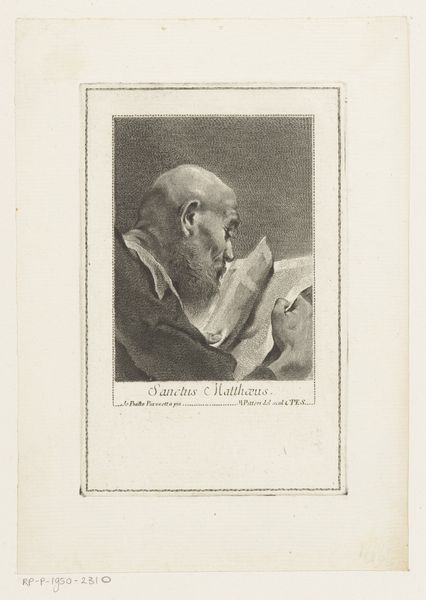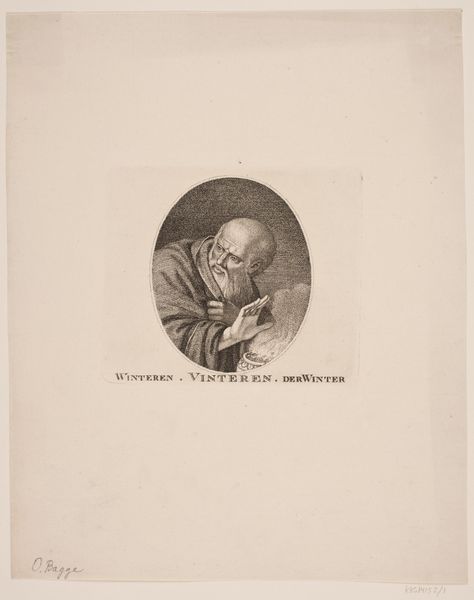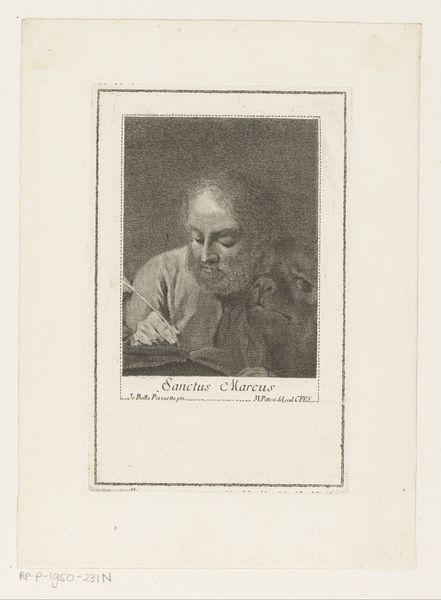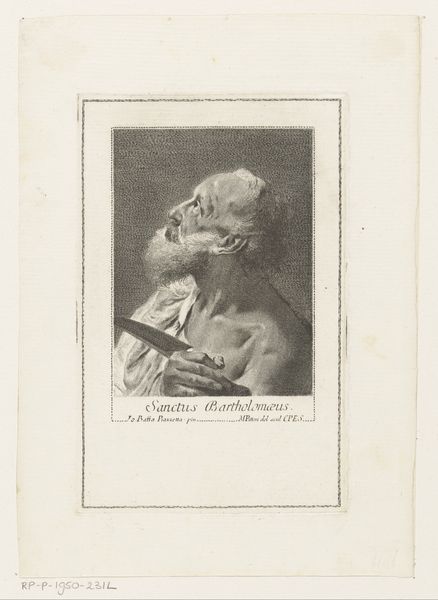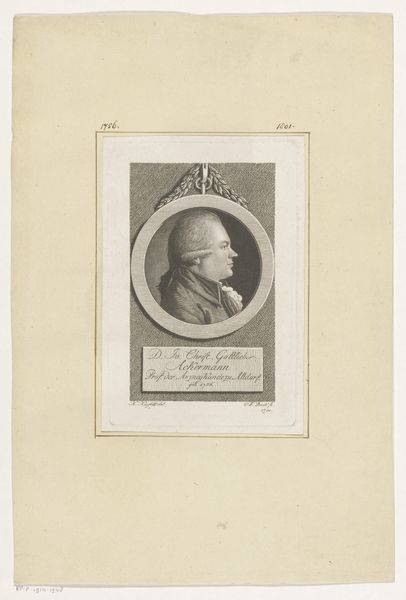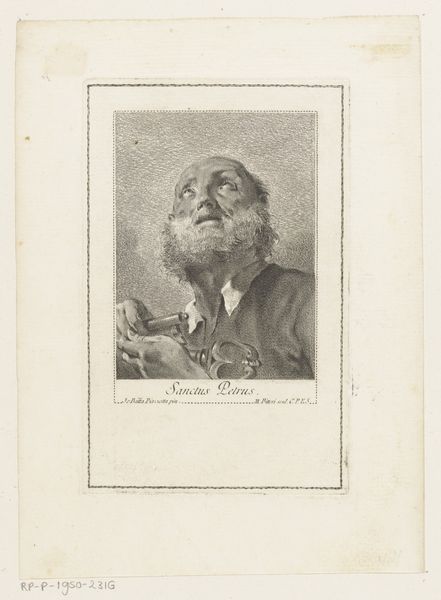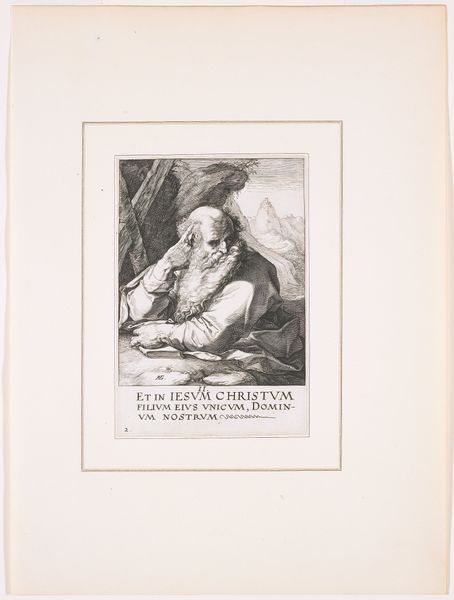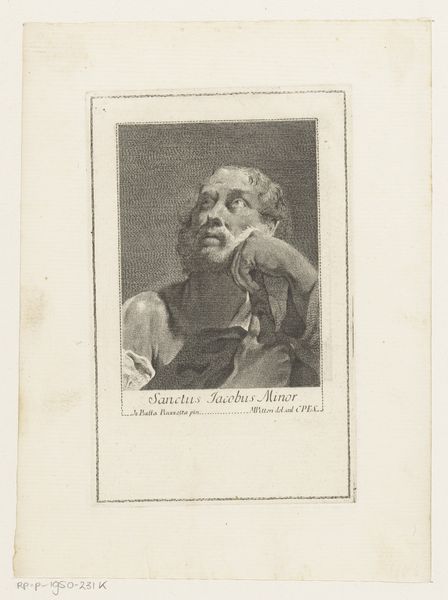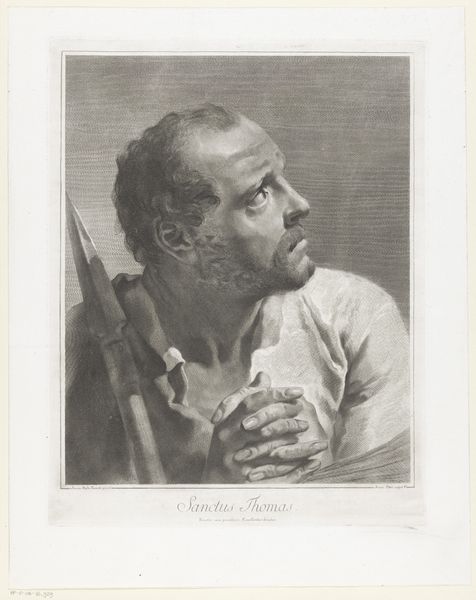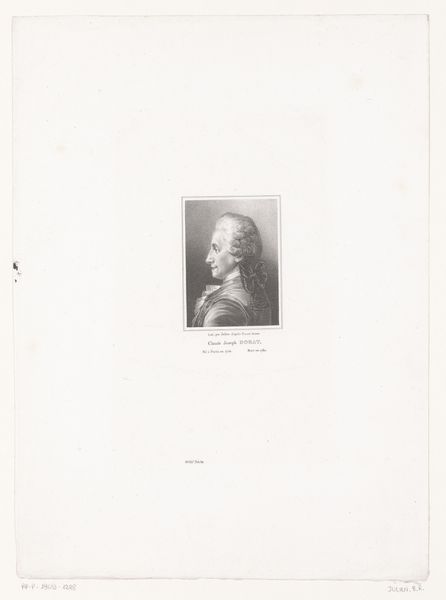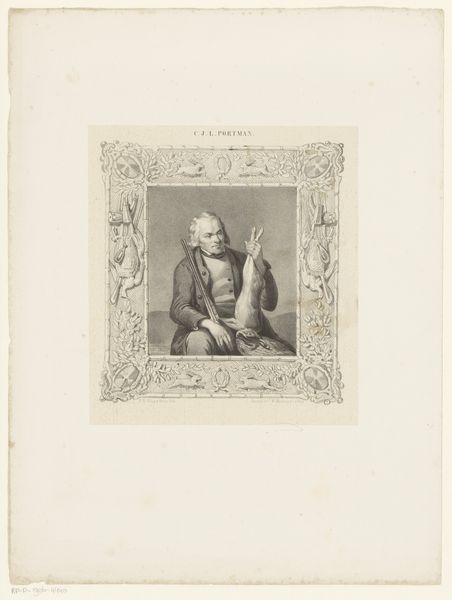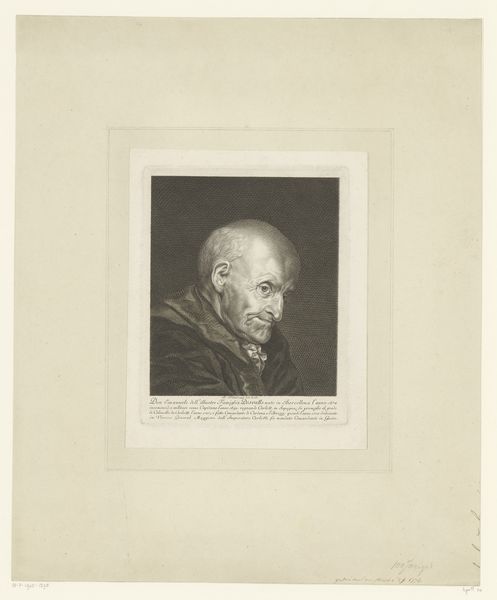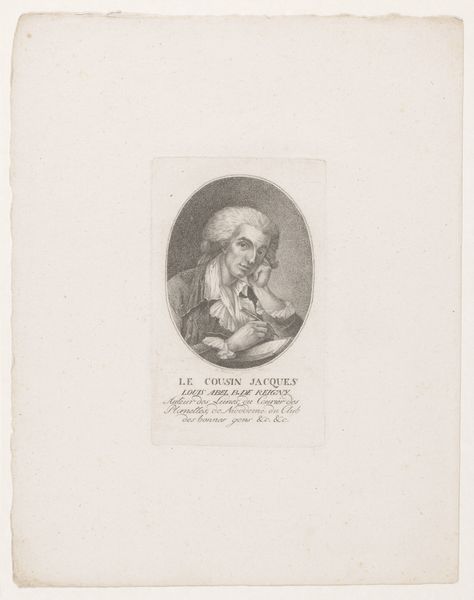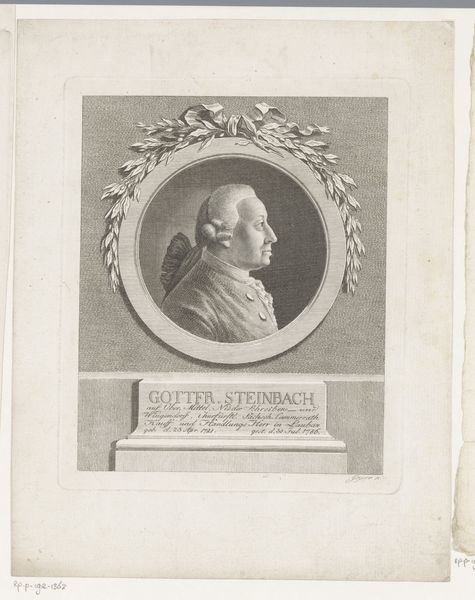
print, engraving
#
portrait
#
baroque
# print
#
old engraving style
#
figuration
#
line
#
history-painting
#
engraving
Dimensions: height 160 mm, width 102 mm
Copyright: Rijks Museum: Open Domain
Editor: Here we have Giovanni Marco Pitteri's "Apostel Tomas," an engraving probably from sometime between 1712 and 1786. There’s a compelling sense of reverence, even yearning, in his upward gaze and clasped hands. How do you see this portrait in light of its history? Curator: Well, considering the historical context, the baroque style was often used to inspire religious fervor. Images like these, circulated as prints, played a significant role in disseminating religious iconography. Note how the artist used the print medium to create gradations in tone; the subtleties of light and shadow likely enhanced the emotional impact, particularly when viewed in domestic settings. Editor: It makes you wonder about the intent. Was it meant to genuinely inspire devotion, or was there a political agenda woven in too? Curator: It’s likely both. The Church was a major patron of the arts, and religious imagery reinforced its authority. But artists like Pitteri also navigated those waters, often subtly critiquing or complicating those narratives. Who controlled the narrative, who got to interpret it and to whom was crucial to power dynamics in society at the time, just like now. Does the Spear symbolize Thomas’ martyrdom, and if so, who ordered it? Editor: That's fascinating. Seeing it through the lens of cultural power dynamics, it completely shifts the way I understand the piece. It's not just about faith; it's about power and representation. Curator: Exactly! And questioning whose story is being told is central to the history of art. Next time you're looking at any historical portrait, consider the context in which it was made. It often reveals hidden layers of meaning.
Comments
No comments
Be the first to comment and join the conversation on the ultimate creative platform.
